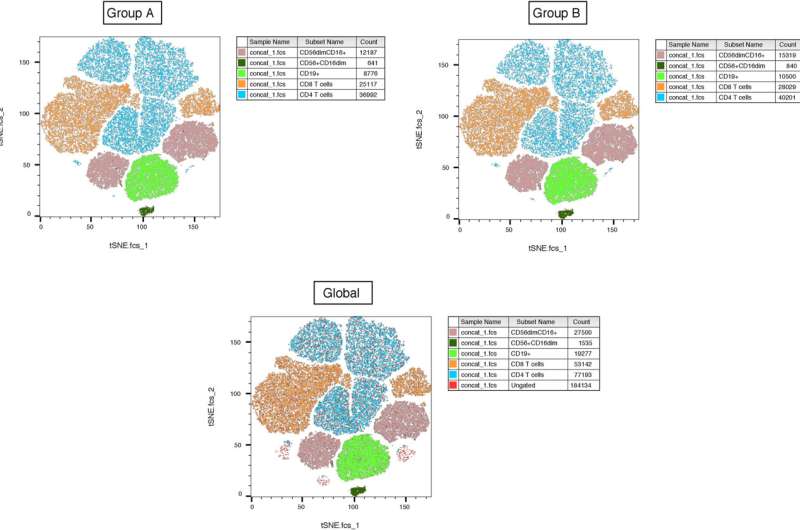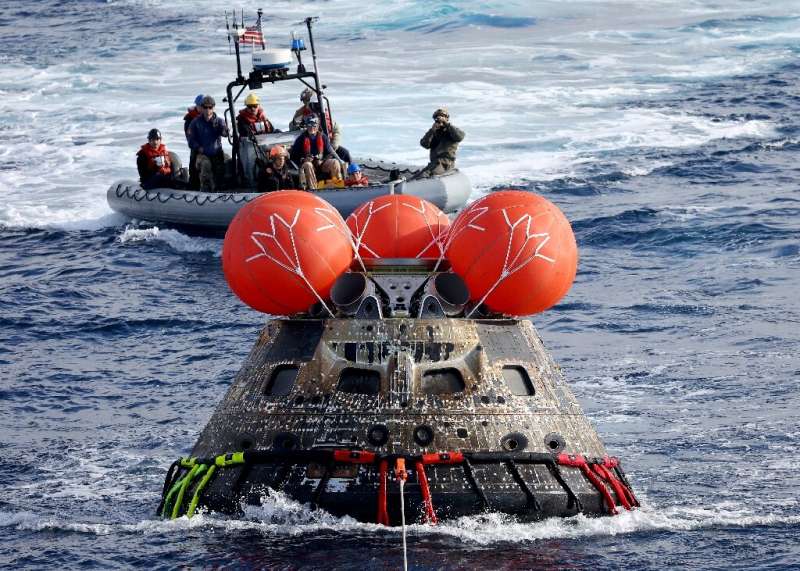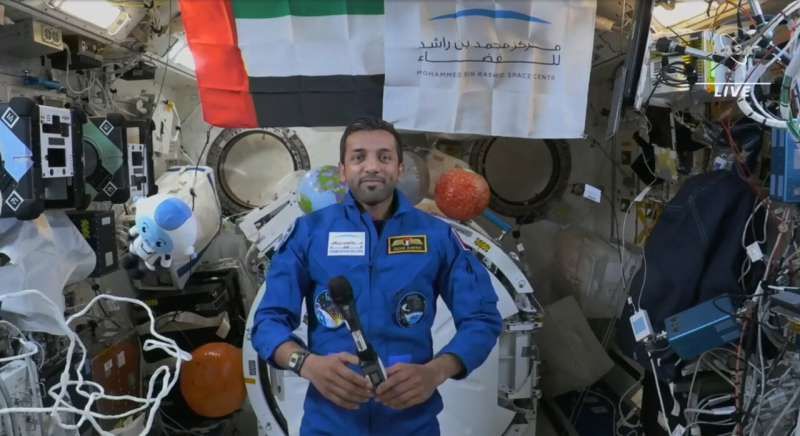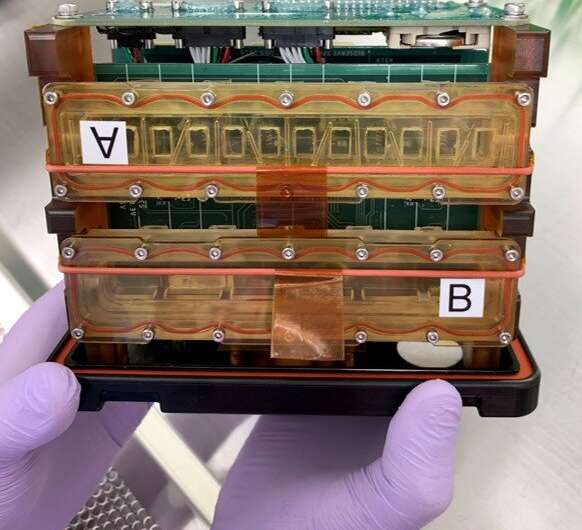Yahsat and MBRSC partner on remote sensing and earth observation
Wednesday, 08 March 2023 08:29 Al Yah Satellite Communications Company PJSC has signed a Memorandum of Understanding (MoU) with the Mohammed Bin Rashid Space Centre ("MBRSC") to collaborate on the commercialization of remote sensing data and earth observation images for Yahsat's commercial and government customers, as well as the potential to collaborate in R and D and in-country manufacturing.
Under the partnership, MB
Al Yah Satellite Communications Company PJSC has signed a Memorandum of Understanding (MoU) with the Mohammed Bin Rashid Space Centre ("MBRSC") to collaborate on the commercialization of remote sensing data and earth observation images for Yahsat's commercial and government customers, as well as the potential to collaborate in R and D and in-country manufacturing.
Under the partnership, MB The Roman Space Telescope will rewind the Universe
Wednesday, 08 March 2023 08:29 A new simulation shows how NASA's Nancy Grace Roman Space Telescope will turn back the cosmic clock, unveiling the evolving universe in ways that have never been possible before when it launches by May 2027. With its ability to rapidly image enormous swaths of space, Roman will help us understand how the universe transformed from a primordial sea of charged particles to the intricate network of
A new simulation shows how NASA's Nancy Grace Roman Space Telescope will turn back the cosmic clock, unveiling the evolving universe in ways that have never been possible before when it launches by May 2027. With its ability to rapidly image enormous swaths of space, Roman will help us understand how the universe transformed from a primordial sea of charged particles to the intricate network of Italian airline signs up for space-enabled flights
Wednesday, 08 March 2023 08:00
Passengers flying on Italy’s national carrier ITA Airways will experience fewer flight delays and greener travel thanks to pilots being able to use satellites to route their planes.
Australian astronaut candidate to receive basic training with ESA
Wednesday, 08 March 2023 06:51
Rocket Lab announces launch window for second Electron Mission from Virginia
Wednesday, 08 March 2023 06:30 Rocket Lab USA, Inc (Nasdaq: RKLB) has scheduled its next Electron launch from Virginia during a launch window that opens March 11, 2023 Eastern. The "Stronger Together" mission is scheduled to launch from Rocket Lab Launch Complex 2 (LC-2) on Wallops Island, Virginia for American space tech company Capella Space, a leading provider of commercial Synthetic Aperture Radar (SAR) imagery.
The
Rocket Lab USA, Inc (Nasdaq: RKLB) has scheduled its next Electron launch from Virginia during a launch window that opens March 11, 2023 Eastern. The "Stronger Together" mission is scheduled to launch from Rocket Lab Launch Complex 2 (LC-2) on Wallops Island, Virginia for American space tech company Capella Space, a leading provider of commercial Synthetic Aperture Radar (SAR) imagery.
The Layering history shows how water and carbon dioxide have moved across Mars
Wednesday, 08 March 2023 06:30 Mars' south polar layered deposits of H2O and CO2 ice record its climate history. A new study links the long-term global movement of Mars' water from midlatitude to pole to a function of the planet's orbital configuration with H2O ice deposition decreasing as a factor of obliquity, or spin-axis tilt.
"No deposit yet analyzed provides a global water cycle record that can be tied to a specif
Mars' south polar layered deposits of H2O and CO2 ice record its climate history. A new study links the long-term global movement of Mars' water from midlatitude to pole to a function of the planet's orbital configuration with H2O ice deposition decreasing as a factor of obliquity, or spin-axis tilt.
"No deposit yet analyzed provides a global water cycle record that can be tied to a specif No major issues found with Artemis 1 mission
Wednesday, 08 March 2023 03:58
An ongoing review of data from the Artemis 1 mission has turned up no issues that would delay the crewed Artemis 2 mission scheduled for launch late next year.
How does the immune system react to altered gravity?
Tuesday, 07 March 2023 20:16
Space travel has always tested the human body by the effects of the new conditions of altered gravity on biological systems. It has long been known that continuous exposure to microgravity conditions human physiology and causes effects that compromise muscular, sensory, endocrine and cardiovascular functions. But is it also risky to be exposed to altered gravity for short periods of time?
Now, a paper published in the journal Acta Astronautica examines the effects of microgravity generated by a parabolic flight on the human immune system. After a short exposure to altered gravity, there were no significant changes in the defensive capacity of blood cells in the volunteers who took part in the study.
NASA's Artemis 2 mission around Moon set for November 2024
Tuesday, 07 March 2023 20:14
NASA is on track to launch a crewed mission around the Moon in November of next year after a successful unmanned test flight, the US space agency said Tuesday.
NASA officials provided an update on the Artemis program, which aims to return humans to the Moon for the first time since the historic Apollo missions ended in 1972.
The first Artemis mission wrapped up in December with an uncrewed Orion capsule returning safely to Earth after a more than 25-day journey around the Moon.
Artemis 2, scheduled to take place in late November 2024, will take a four-person crew around the Moon but without landing on it.
"We're looking forward to that crew flying on Artemis 2," NASA associate administrator Jim Free told reporters. "Right now there's nothing holding us up based on what we learned on Artemis 1."
NASA is to reveal the members of the Artemis 2 crew later this year. All that is known so far is that one of them will be a Canadian.
Rocket Lab ‘very happy’ with Space Force plan to procure launch services
Tuesday, 07 March 2023 18:57
Rocket Lab’s chief executive Peter Beck says the company played an active role in reshaping the U.S.
Latest astronaut from UAE getting used to space
Tuesday, 07 March 2023 18:30
The second astronaut from the United Arab Emirates is still adjusting to life off the planet, after rocketing to the International Space Station last week.
Heart tissue heads to space to aid research on aging and impact of long spaceflights
Tuesday, 07 March 2023 18:11
Johns Hopkins Medicine researchers are collaborating with NASA to send human heart "tissue-on-a-chip" specimens into space as early as March. The project is designed to monitor the tissue for changes in heart muscle cells' mitochondria (their power supply) and ability to contract in low-gravity conditions.
The tissue samples will be launched into space aboard SpaceX CRS-27, a resupply mission to the International Space Station, slated for liftoff no earlier than Tuesday, March 14, at NASA's Kennedy Space Center in Florida.
Astronauts on board during the mission will also introduce three FDA-approved medicines to the samples in efforts to prevent heart cell changes known or suspected to occur in those undertaking long-duration spaceflights.
Florida’s Space Economy: The Future is Now
Tuesday, 07 March 2023 17:59
The foundation for a global aerospace economy was born in Florida and continues to soar to new heights in the Sunshine State.
Space Ambition now interactive!
Tuesday, 07 March 2023 13:35
The interactive version of the Space Ambition book is now online, featuring all the content and images included in the hardcover edition.
Boeing’s ground system for U.S. satellite communications passes key test
Tuesday, 07 March 2023 13:34
Boeing completed a demonstration of a U.S.

